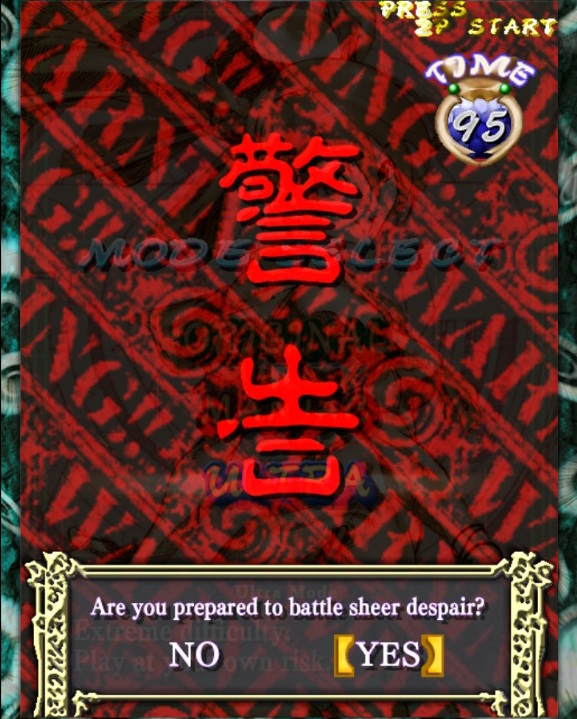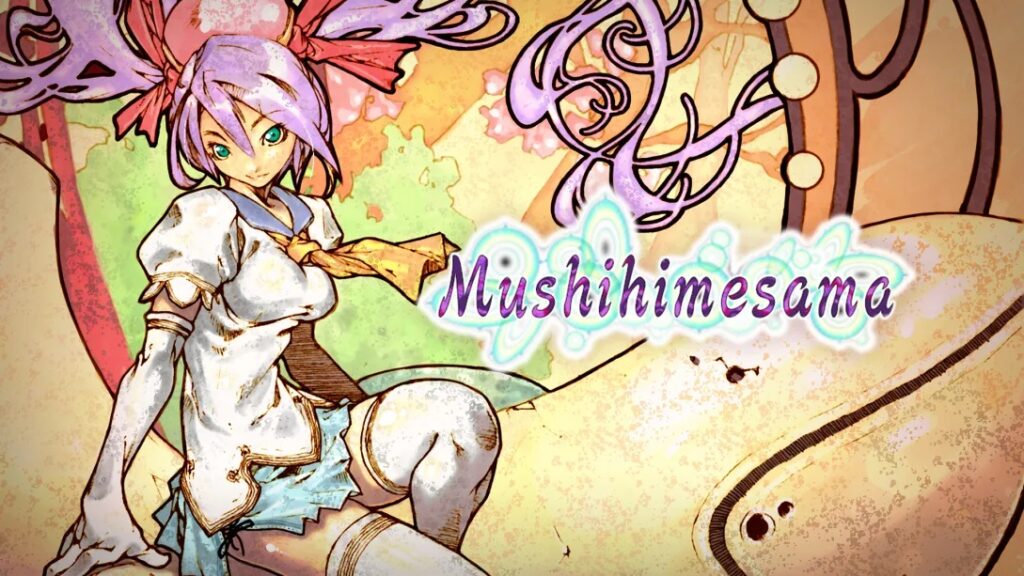
How do you explain games from a company like Cave to someone who has never played them? For the uninitiated, bullet hell games are a mystery that belies understanding. Brightly colored swarms of bullets slathering the screen like a chaotic whirlwind of death, tiny ships that flit about the screen like angry wasps (and there are plenty of angry wasps too), and a dedication required that makes Souls fans queasy. But shmups, and in particular bullet hell shmups, have become a sort of video game art form, and Cave Interactive Co., Ltd. is the shining star at the top of the mountain that is the shmup genre.
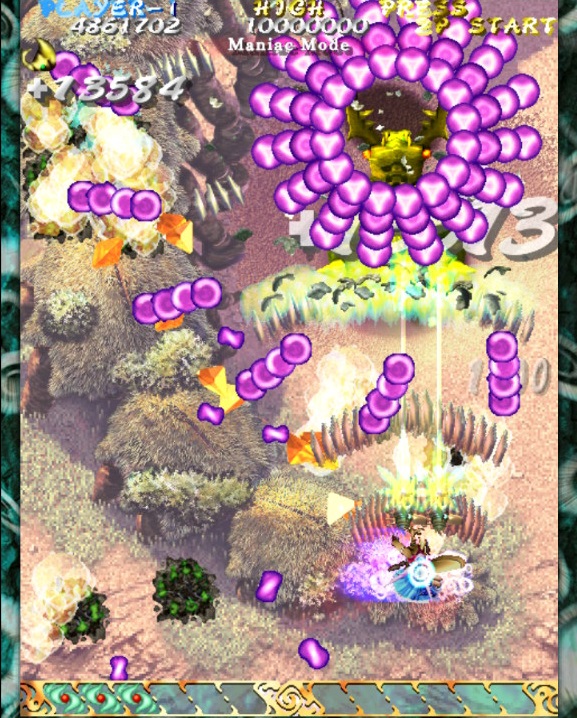
Cave started making games in the mid-90s, formed by a few former Toaplan employees (also a huge shmup company). They started with Donpachi on the Saturn and arcade and quickly became known for games that were both challenging and fun, baking in a variety of interesting scoring mechanisms, hidden surprises, and a level of replayability rarely seen in any genre. They were and still are wildly popular in the arcades of Japan, though mainstream acclaim has largely avoided Cave in the west. Almost a decade after Donpachi was released, Mushihimesama debuted in arcades. For 2004, it was revolutionary and has been in constant rotation for hardcore shmup fans ever since. Mushihimesama literally translates to Bug Princess, hence the wide variety of girls and bug enemies found throughout the game. Initially, the game was only available in arcades and a PCB board (assuming you have an arcade cab or JAMMA setup to play it on) will cost you close to $1000 now. Even the PS2 and Xbox versions released exclusively in Japan (and you’ll need some Japanese hardware or a mod to play them) run $100-200. The game has been available on Steam for a while with a different publisher and fewer options and versions, but somehow has not found a significant audience there.
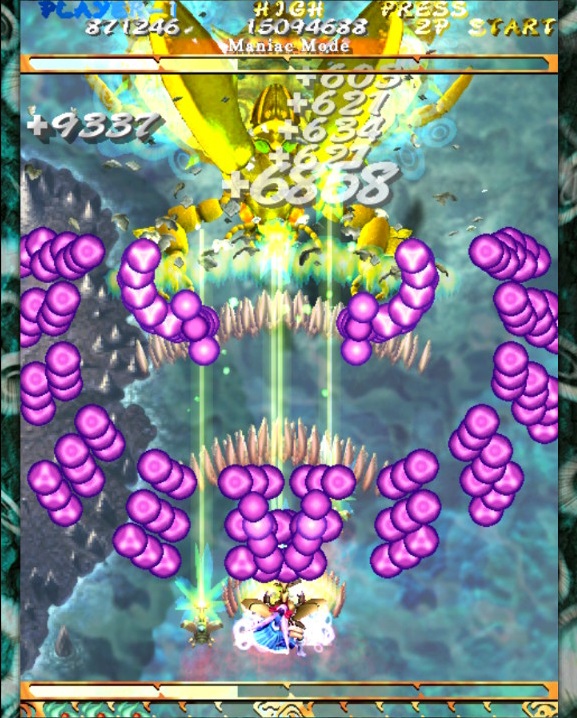
In short, there’s a fair bit of history surrounding Mushihimesama, as with most Cave games, and it’s always been an expensive and difficult game to find and play. No longer! Cave has finally graced us with a Western port of Mushihimesama courtesy of publisher Live Wire Inc., shadow dropped (which means completely unannounced) during the Nintendo Treehouse E3 2021 event! For them to have suddenly released Mushihimesama to Western audiences is not only completely unexpected but incredibly exciting, especially at a very affordable $20 price point on the Switch! Live Wire’s surprise release contains a wealth of bullet hell goodness, including all three major versions of Mushihimesama, Original, Arrange, and Mushihimesama 1.5. While each iteration of the game has the same levels, bullet patterns, enemy distributions, game balance, and scoring all vary from title to title. Additionally, you now have the ability to record your replays, check the leaderboards, and experience the variety that this amazing Cave game has to offer. Let’s take a look at the original Mushihimesama first.

In the Normal arcade version, Mushi (as it is affectionately called by fans) is fairly straightforward. There are three modes, Original, Maniac, and the absolutely mind-numbing Ultra mode. In all versions there are three types of shots, M, W, and S. Generally, it’s best to avoid M entirely, both for scoring and survival purpose. There are also powerup options to collect that give you assist ships that either trail you or form up on either side of your ship, allowing for a variety of firing options. There’s a tiny glowing dot in the center of your ship too. That’s your hitbox. Anything that doesn’t hit that exact part of your ship doesn’t count as a hit, allowing you to get uncomfortably close to the bullets. Scoring in this version requires you to survive without dying, kill the bosses while there are a ton of bullets on-screen, and kill all the bugs, gathering up the gems they leave behind. Sounds simple, right? Well, just wait until you see how fast everything is and how dense the bullets are as you get going!
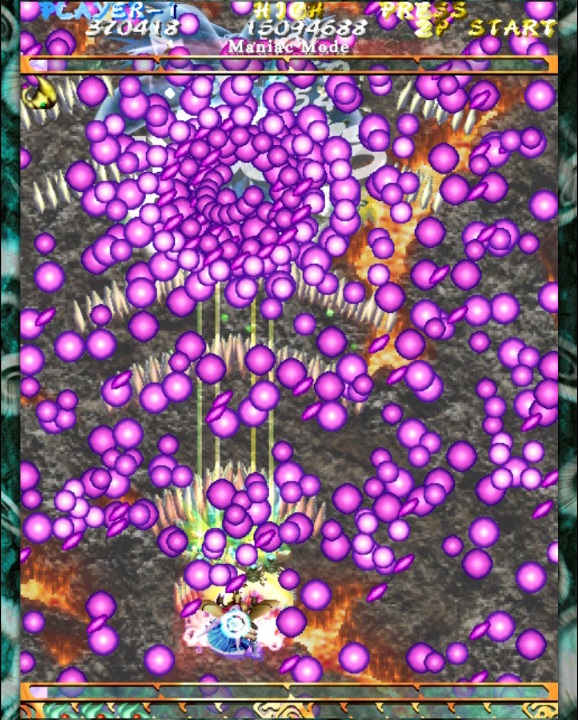
In Arrange mode, originally developed for the PS2, Mushihimesama has been reformulated to maximize a focus on high scores. Even average players can rack up a gigantic score here, but that just means that to be truly impressive, the scores have to be unfathomably huge. In addition to the much higher overall scores, you start the game fully powered up with 6 option ships and any time you take a hit, you automatically bomb and survive, essentially giving you an extra life per bomb. Arrange mode makes you feel like you can actually get somewhere in Mushi, but really, you’re just bomb spamming and the goal is still to not take hits as much as possible. The downside of Arrange mode is that, while you’re racking up the points, the fire patterns from both your guns and the enemy’s are so dense that it’s hard to see the beauty and detail work of the game itself. That’s an issue for every Cave game (they’re as great to watch as they are to play) but especially so in Arrange mode. Even the soundtrack is substantially remixed in Arrange mode, giving it an entirely separate feel from the Normal game.
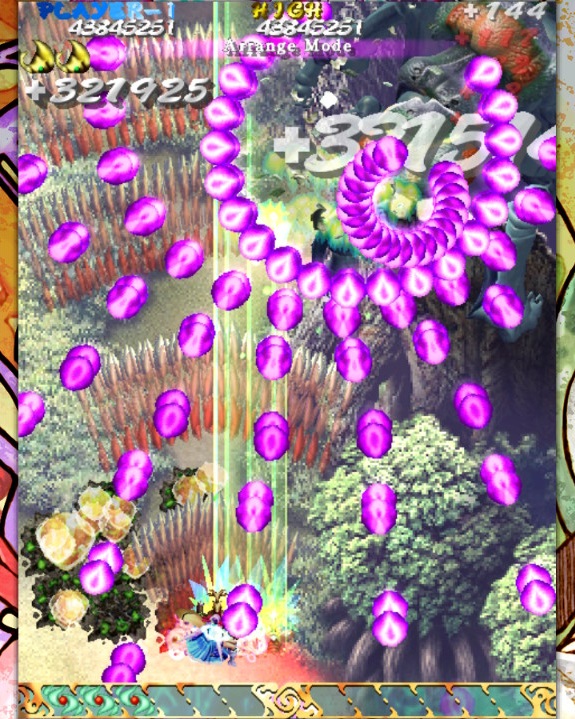
Finally, there’s Mushihimesama Version 1.5, the third mode available in the collection. This was originally released as a modification for the Cave Matsuri festival and was quite hard to find initially, though it was released as DLC on the Japanese 360. You can start out with weapons maxed out here as well, and the enemy bullet patterns and placement are different as well. The colors are shifted as well, though the soundtrack is similar. Basically, aside from the enemies, backgrounds and general mechanics, the entirety of Mushi 1.5 feels like a different game, albeit one that feels overall a bit easier than the originals. There’s even scoring for how close you get to the enemies…if you dare! Of the three versions of the game, the original version is considered the definitive edition, but each has its pros and cons!
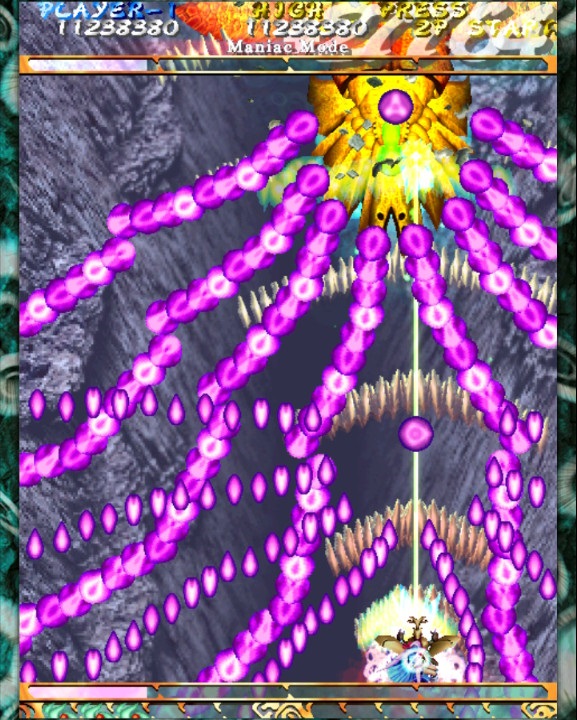
Visually, Mushihimesama is a masterpiece. For sprite-based graphics, this is where we should be, with rich, detailed environments, complex enemies, and vivid, unique colors. One entire level is a giant caterpillar! It frankly always astonishes to see the level of detail that Cave puts into their designs and is also absolutely tragic, since when you’re actually playing the game, you have exactly no time to gaze about admiring the beauty. You will die. Fast. The soundtrack is outstanding as well, a pulsing electronic morass of adrenaline and excitement that perfectly accompanies the frantic complexity of the bullet-laden gameplay.
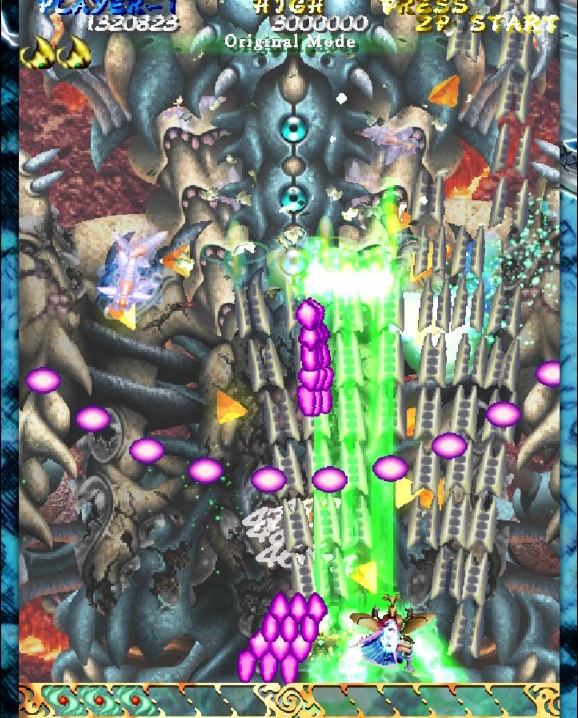
That gameplay is the crux of Mushihimesama too. You’ve seen the structure of each mode now, but gameplay is something a bit different. There’s an art to playing bullet-hell shmups and it’s hard to really explain it in words. The bullet patterns in Mushihimesama and other Cave games are complex and dense, with pink bullets washing across the screen in unsurvivable waves. But somehow, you can navigate through, with a little patience and practice. Once you get the feel for it, there’s a sweet spot where your hand becomes an extension of the ship and you slide effortlessly through the minute spaces between bullets to evade a pattern that looked like certain death. In fact, one of Cave’s more famous games, DoDonPachi Dai Ou Jou literally translates to Peaceful Death (or Blissful Death depending on the translation), expressing the zen-like nature of the frantic bullet patterns. This dichotomy between frantic guns-blazing action and an almost meditative state that one can reach while playing the game may explain the incredible popularity these games continue to maintain in Japan and which has slowly spread to the rest of the world.
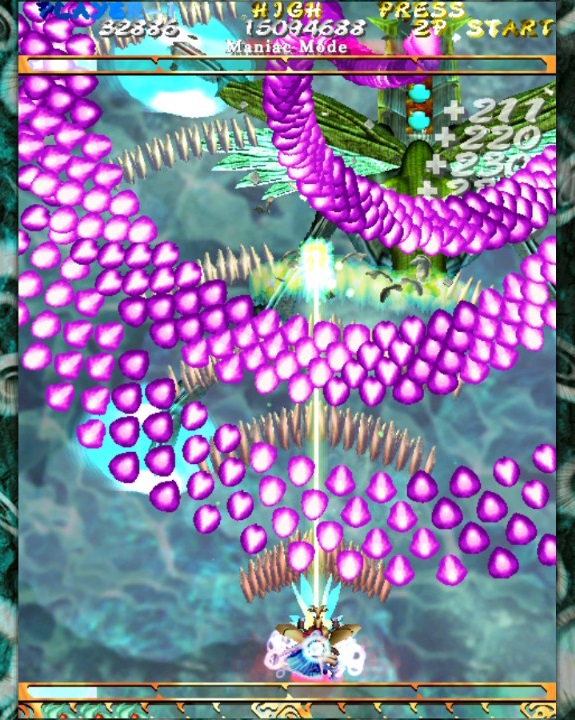
When playing Mushihimesama, chances are good that you’ll find the Joycons a bit difficult to use. This is a game that’s entirely designed for high-end performance arcade joysticks with near-perfect response time. Playing it on a controller is noticeably more challenging, especially if you’ve played the original arcade version. The Joycons are not recommended if at all possible, though they are currently the best way to play it portably if you are using the Flip Grip to play in TATE (vertical) mode. Mushi is entirely compatible with the Flip Grip and is pretty great that way if that’s your only method of playing vertical. As you may have noticed, the entire game is designed to be played vertically and shrinks significantly unless you have either the ability to rotate your monitor or play vertical on the Switch. In the arcade, the entire monitor is in vertical mode of course. The Split Pad Pro is decent for portable play but it just doesn’t feel quite right. Of the main options available, the Switch Pro Controller is the best solution for playing Mushi, as the D-pad is quite responsive and the stick feels decent for play as well. Generally, shmups on consoles are best with D-pads unless you happen to have an arcade stick around. If you do, play Mushi with an arcade stick and nothing else. You won’t regret it.
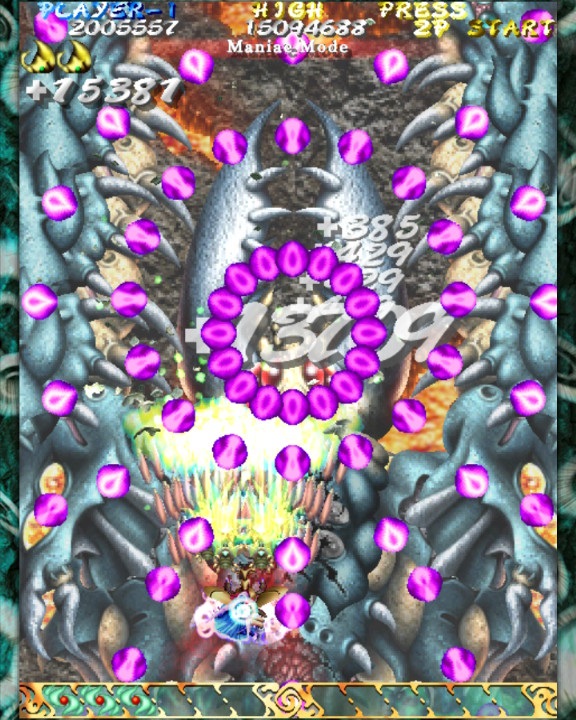
Live Wire has done a magnificent job of translating Mushi to the Switch, so the response time, while not arcade perfect, is only one frame off. In other words, especially for the Swtich, Mushihimesama is incredibly responsive That slowdown you get when there are a million bullets on-screen? It’s supposed to do that. Don’t worry, there’s nothing wrong! If you manage to survive to level 3 for the first time, you’ll really see some slowdown too. Think of it as a way to dodge the crazy patterns more easily. This is intact from the arcade version of the game, and Live Wire has thankfully left it in to preserve both the gameplay design and the accuracy of the port. This is a design element that was created by hardware limitations initially but became a standard for some Cave games. If it is removed, they simply don’t feel the same, another example of the subtle artistry that permeates Cave titles.
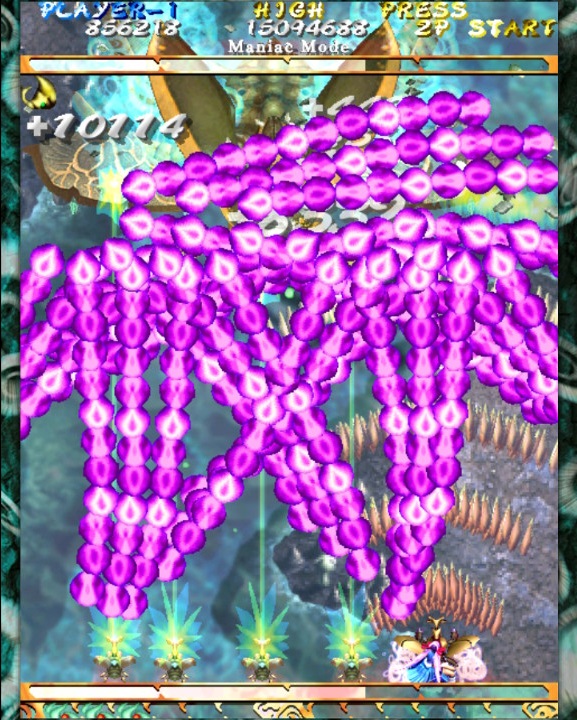
In addition to the fantastic modes, there a few more extras available in Mushihimesama for the Switch. A variety of wallpaper and screen options are at your disposal, as are a Score Attack mode where you can compete against friends and even a Training mode where you can get your skills up high enough to face the game! Training mode allows you to select what stage, shot type, power level, number and type of options, and even your bomb count. Basically, you can practice every aspect of gameplay on any level of difficulty to really master Mushihimesama! Additionally, there is a Novice mode that was initially missed in this review (simply press left at the game from “Normal” on the selection screen, thanks to @masterLEON for pointing this out!). Novice mode has a huge reduction in bullet rates and patterns to give beginners the practice they need to learn the levels and enemy placements without dying constantly. For those shmup aficianados reading this, the difficultly is so low that you can play on the Switch in hori mode and get a No Miss the first try on the first level with barely any effort! There’s really a lot going on in a small package with Mushihimesama!
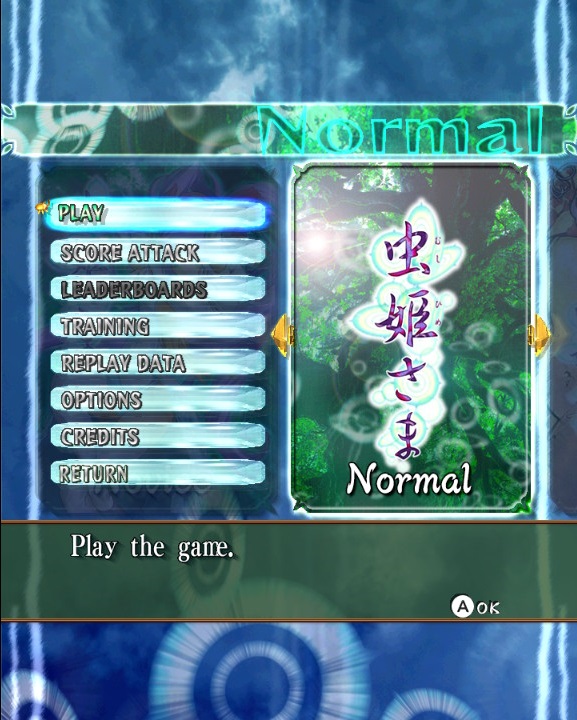
Bullet-hell games are not for everyone. Some people can’t handle the busy screens, some get stressed out when trying to dodge bullets, and some people simply don’t have the reflexes or dedication to learn how to play a game like Mushihimesama. This isn’t a game you can learn from a tutorial, but instead one that requires patience and dedication as well as innate skill to master. Cave games are a microcosm of the Japanese culture, showcasing complexity, patience and appreciation for skill in a way that has never really carried over the the West unfortunately. But for your twenty bucks, you’re getting a thousand dollar game that’s incredibly challenging, difficult to master, and thoroughly gratifying. Mushihimesama represents the culmination of the arcade experience, finally brought home and available to gamers from the comfort of their living room. It’s a unique and singular experience and let’s hope that this is only the start of more Cave game releases in the West!
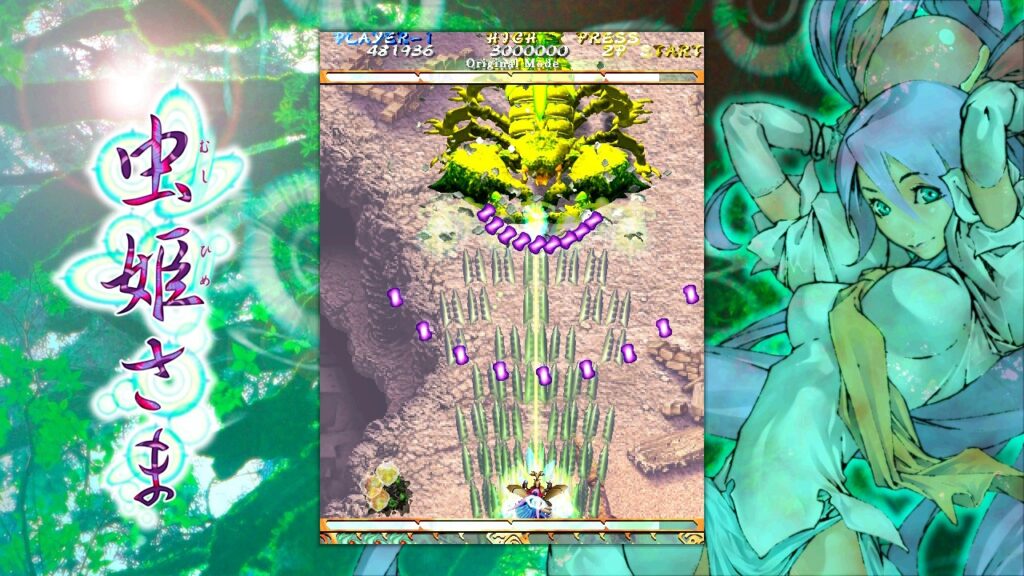
This copy of Mushihimesama was provided by the publisher. It was played on a Nintendo Switch in both docked and undocked modes and was excellent in both. This version of Mushihimesama is exclusive to the Nintendo Switch and currently and unfortunately only available as a digital version. All screenshots are of actual gameplay. Vertical images have been cropped to eliminate dead space from horizontal screens.
